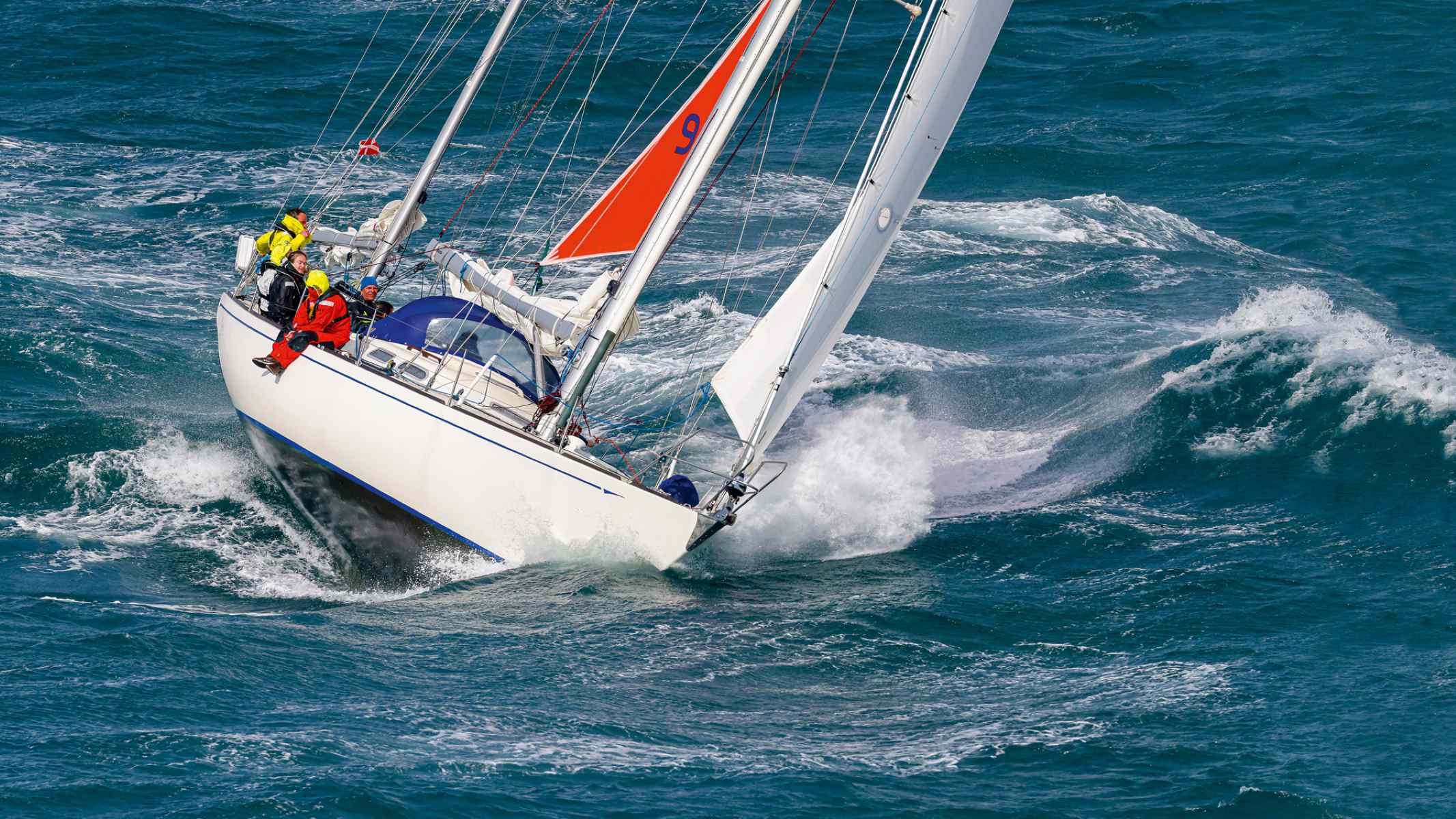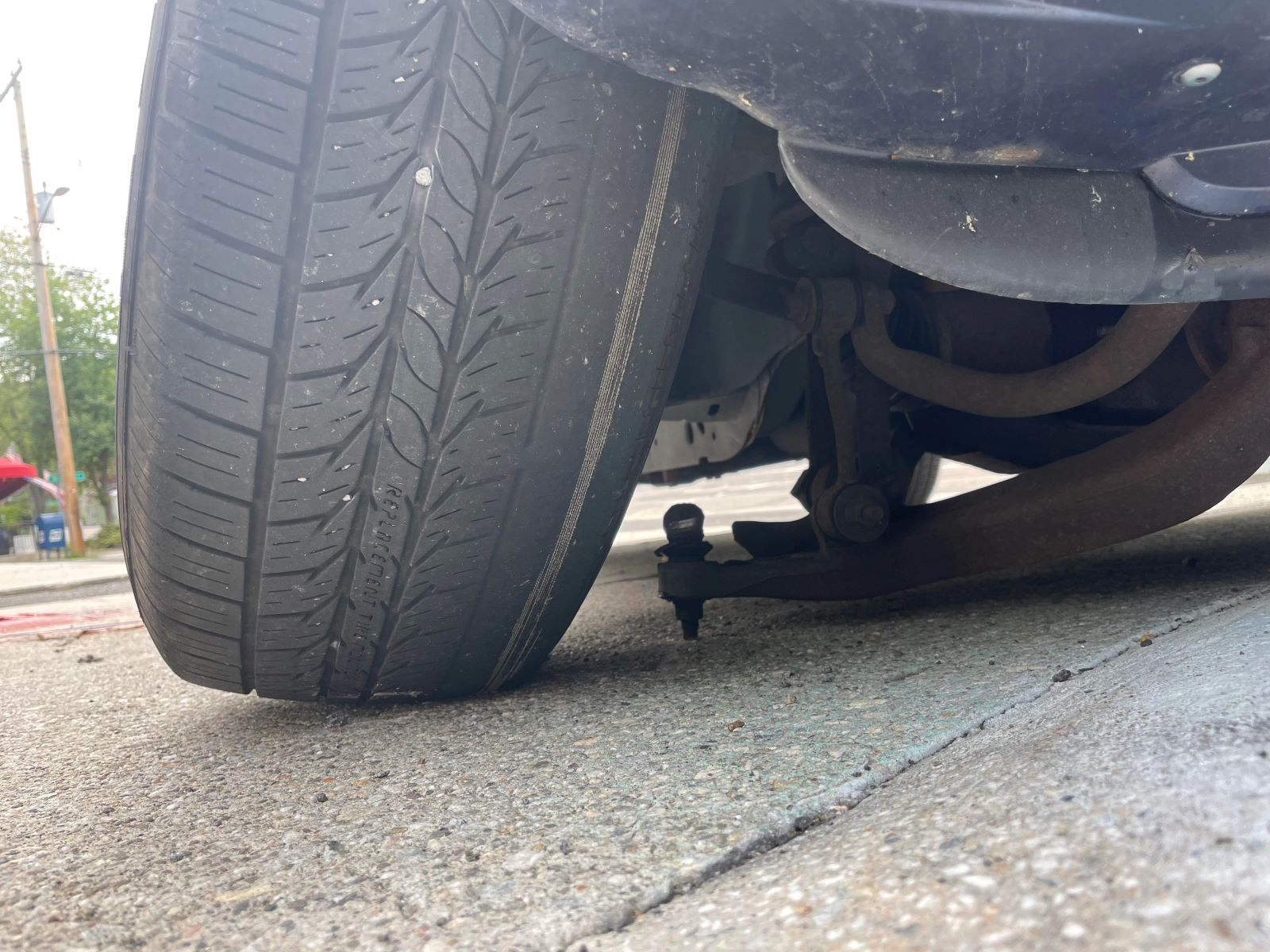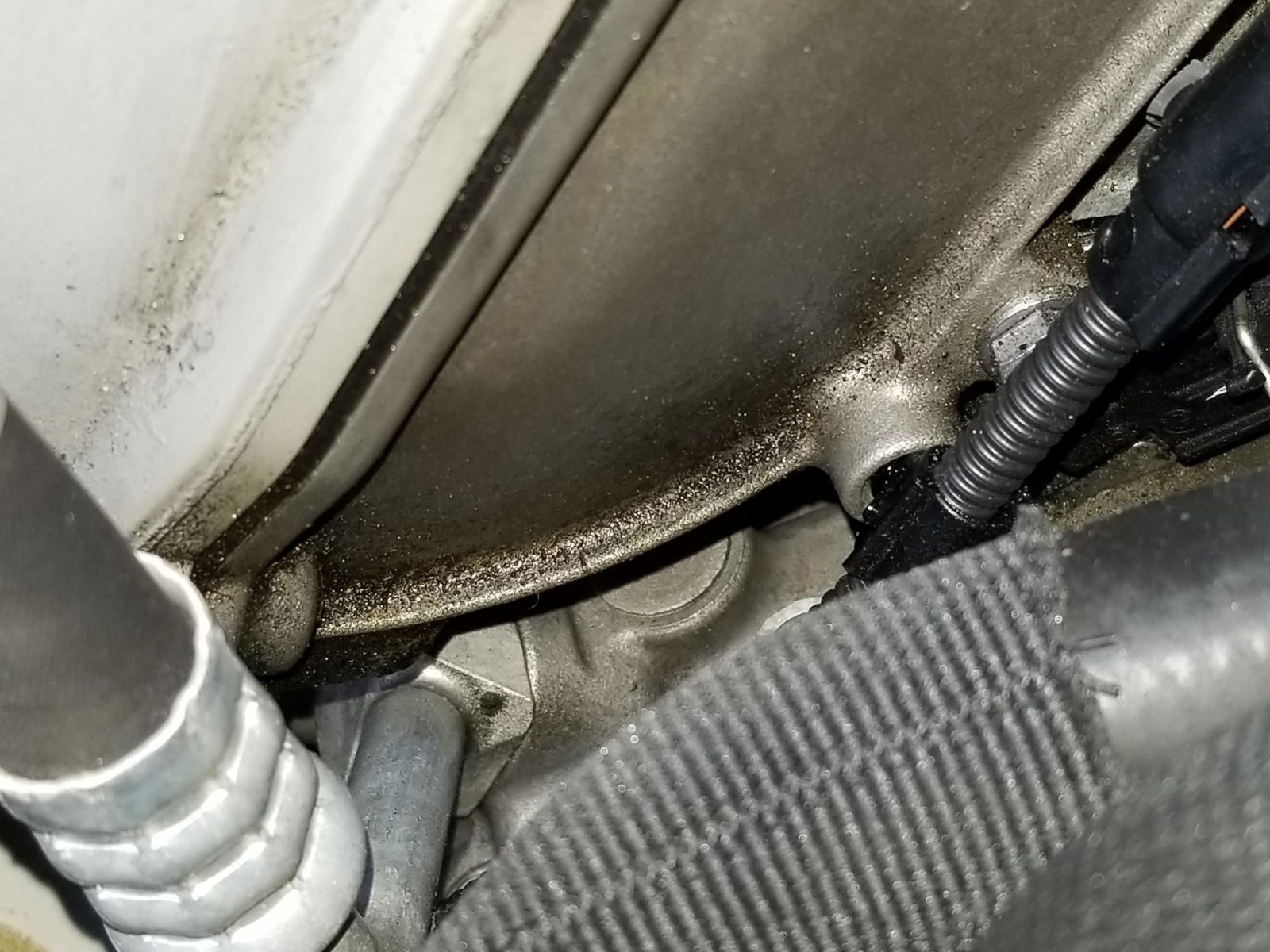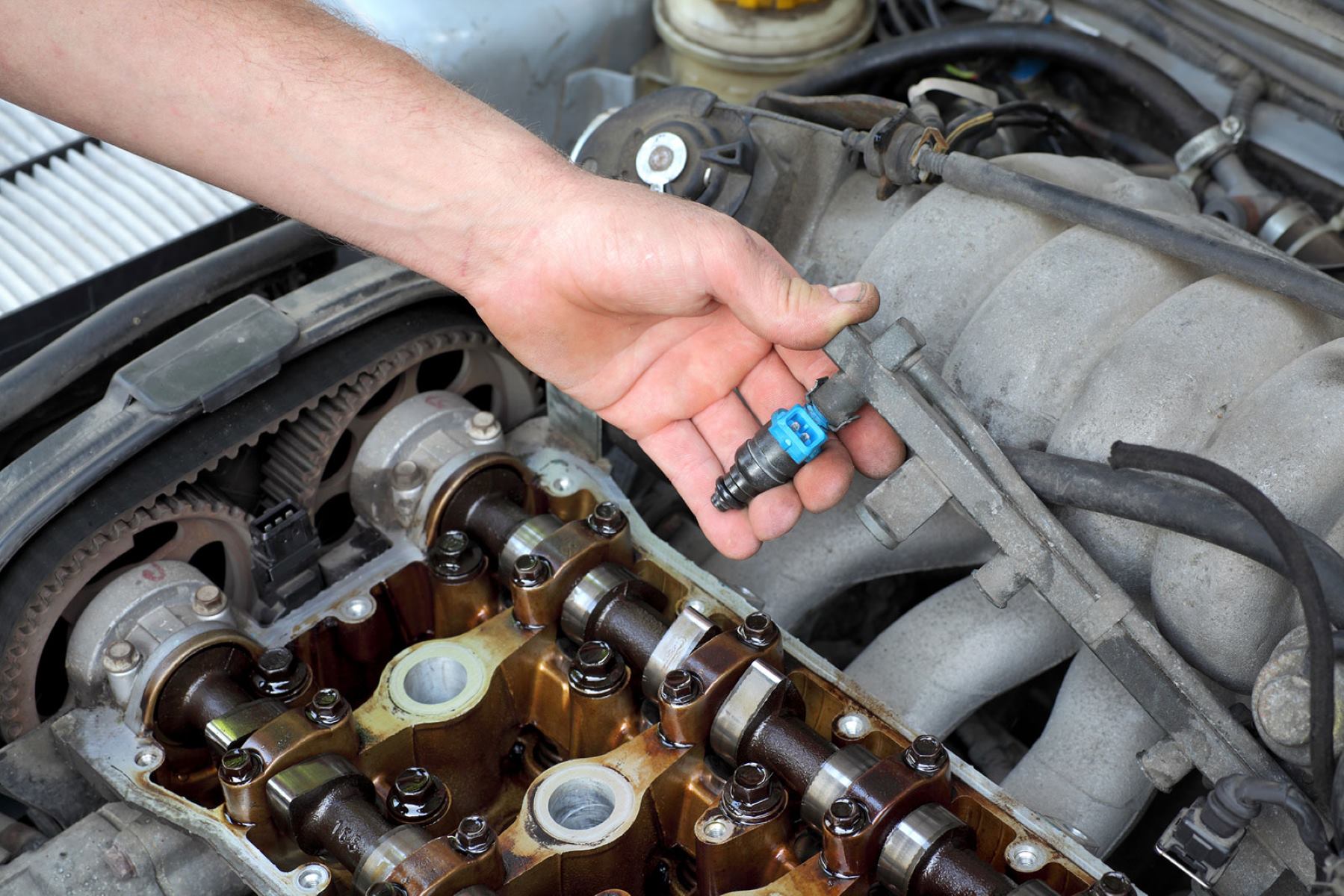Home>Weather>Surviving Severe Weather While Boating: Essential Tips And Tricks


Weather
Surviving Severe Weather While Boating: Essential Tips And Tricks
Modified: April 1, 2024
Learn essential tips and tricks for surviving severe weather while boating. Stay safe and prepared with expert advice on weather-related challenges.
(Many of the links in this article redirect to a specific reviewed product. Your purchase of these products through affiliate links helps to generate commission for Regretless.com, at no extra cost. Learn more)
Table of Contents
Understanding Severe Weather Conditions
Severe weather conditions can pose significant challenges for boaters, making it essential to understand the various weather patterns that may impact your time on the water. By familiarizing yourself with these conditions, you can proactively prepare and respond to potential threats, ensuring the safety of yourself and your passengers.
Identifying Weather Patterns
Understanding severe weather conditions begins with recognizing the different weather patterns that can affect boating activities. These include thunderstorms, hurricanes, and squalls, each of which presents unique hazards. Thunderstorms are common in many regions and can bring heavy rain, lightning, and strong winds. Hurricanes, on the other hand, are large, powerful storms that can cause widespread destruction, including high winds, heavy rainfall, and dangerous waves. Squalls, characterized by sudden, intense winds, can also catch boaters off guard, necessitating swift and decisive action.
Monitoring Weather Forecasts
Keeping abreast of weather forecasts is crucial for boaters, as it allows for early detection of potential hazards. By leveraging modern weather prediction tools, such as smartphone apps and marine radios, boaters can access real-time updates on developing weather systems. This enables them to make informed decisions regarding their boating plans, including whether to proceed with a trip or seek shelter to avoid impending severe weather.
Understanding Wind and Wave Dynamics
In addition to monitoring forecasts, understanding wind and wave dynamics is essential for navigating severe weather conditions. Strong winds can create turbulent waters, leading to rough and unpredictable waves that pose a threat to boating safety. By comprehending how wind direction and speed impact wave formation, boaters can anticipate and mitigate the risks associated with adverse weather conditions.
Recognizing Atmospheric Pressure Changes
Changes in atmospheric pressure can serve as early indicators of approaching severe weather. A rapid drop in pressure often precedes the arrival of a storm, signaling the need for immediate precautionary measures. By monitoring barometric readings, boaters can detect these pressure fluctuations and take proactive steps to secure their vessels and ensure the safety of everyone on board.
By gaining a thorough understanding of severe weather conditions, boaters can effectively prepare for and navigate through challenging situations, mitigating risks and safeguarding themselves and their vessels from potential harm. This knowledge empowers boaters to make informed decisions and take proactive measures to enhance their safety on the water.
Preparing Your Boat for Severe Weather
Preparing your boat for severe weather is a critical aspect of boating safety, ensuring that your vessel is equipped to withstand and navigate through challenging conditions. By taking proactive measures to secure your boat and minimize potential risks, you can enhance the safety of yourself, your passengers, and your watercraft.
Securing Loose Items
Before severe weather strikes, it is essential to secure all loose items on your boat. Wind and rough waters can cause unsecured objects to become hazardous projectiles, posing a danger to passengers and causing damage to the vessel. Stowing away items such as fishing gear, chairs, and any loose equipment helps prevent them from becoming airborne during strong winds, thereby reducing the risk of injury and damage.
Checking and Reinforcing Mooring Lines
Ensuring that your boat is securely moored is vital for withstanding severe weather conditions. Before a storm or adverse weather event, inspect the mooring lines to confirm that they are in good condition and properly secured to the dock or mooring buoy. Additionally, reinforcing the mooring lines by adding extra fenders and adjusting their positioning can provide added protection against rough waters and strong winds, preventing the boat from being damaged or dislodged from its mooring.
Securing Hatches and Closures
Properly securing hatches, windows, and doors on your boat is crucial for preventing water ingress during severe weather. Ensuring that all openings are tightly sealed helps minimize the risk of flooding and water damage to the interior of the vessel. Additionally, securing closures effectively prevents strong winds from causing structural damage or compromising the integrity of the boat's cabin, enhancing overall safety and protection.
Checking Bilge Pumps and Drainage Systems
Maintaining functional bilge pumps and drainage systems is essential for managing water accumulation during severe weather. Regularly inspecting and testing bilge pumps to ensure they are operational and free of debris is crucial for preventing flooding and maintaining a safe water level within the boat. Additionally, clearing drainage channels and ensuring that scuppers are unobstructed facilitates the efficient removal of water from the deck, enhancing the vessel's stability and safety in challenging weather conditions.
Reviewing Emergency Procedures and Safety Equipment
In preparation for severe weather, it is imperative to review emergency procedures and ensure that all safety equipment is readily accessible and in good working order. This includes checking the functionality of life jackets, fire extinguishers, distress signals, and emergency communication devices. By confirming that all safety equipment is properly maintained and easily accessible, boaters can effectively respond to emergencies and mitigate risks during severe weather events.
By diligently preparing your boat for severe weather, you can significantly reduce the potential impact of adverse conditions and enhance the safety of your boating experience. Taking proactive measures to secure loose items, reinforce mooring lines, secure hatches, maintain drainage systems, and review safety equipment empowers boaters to navigate through challenging weather with confidence and resilience.
Essential Safety Equipment for Severe Weather
When facing severe weather conditions while boating, having essential safety equipment on board can make a crucial difference in ensuring the well-being of everyone on the vessel. These critical tools and resources are designed to provide protection, communication, and navigation capabilities, enabling boaters to effectively manage challenging situations and respond to emergencies with confidence.
Life Jackets and Personal Flotation Devices
Life jackets and personal flotation devices (PFDs) are fundamental safety essentials that can significantly increase the chances of survival during severe weather events. Properly fitting and Coast Guard-approved life jackets should be available for every individual on board, with additional consideration given to specialized PFDs suitable for children and pets. These devices offer buoyancy and support in the event of capsizing or falling overboard, providing vital protection in rough waters and adverse weather conditions.
Emergency Signaling and Communication Devices
Effective communication during severe weather is paramount for seeking assistance and relaying distress signals. Boaters should equip their vessels with reliable communication devices, such as VHF marine radios, emergency beacons, and handheld signaling devices. These tools enable boaters to communicate with rescue authorities, nearby vessels, and shore-based support in the event of an emergency, facilitating prompt and coordinated response efforts.
Navigation and Positioning Tools
Navigating through severe weather requires accurate positioning and navigational aids to ensure the safety of the vessel and its occupants. Global positioning system (GPS) devices, radar systems, and electronic chart plotters are indispensable for maintaining situational awareness and plotting safe courses during adverse weather conditions. These tools provide real-time location information, identify potential hazards, and assist in avoiding dangerous areas, contributing to overall navigation safety.
First Aid Kits and Medical Supplies
In the event of injuries or medical emergencies during severe weather, having a well-stocked first aid kit and essential medical supplies onboard is indispensable. These kits should include bandages, antiseptics, medications, and basic medical tools to address injuries and stabilize medical conditions until professional help can be obtained. Additionally, boaters should be familiar with basic first aid procedures and techniques to provide immediate assistance when needed.
Emergency Power and Lighting Systems
Maintaining access to power and illumination is critical for ensuring operational functionality and visibility during severe weather events. Boaters should equip their vessels with emergency power sources, such as backup batteries, generators, or solar chargers, to sustain essential electronic equipment and lighting systems. Adequate lighting, including handheld flashlights and distress signal lights, enhances visibility and facilitates effective communication with rescuers and other vessels.
Read more: The Foolproof Trick To Determine A Ripe And Sweet Cantaloupe Without Wasting A Single Slice!
Weather Monitoring and Alert Systems
Utilizing advanced weather monitoring and alert systems enhances situational awareness and provides early warnings of approaching severe weather. Boaters can install weather radios, satellite weather receivers, or weather alert apps to receive real-time updates on changing weather conditions, including thunderstorms, high winds, and other potential hazards. These systems empower boaters to make informed decisions and take proactive measures to navigate safely through challenging weather scenarios.
By equipping your boat with these essential safety tools and resources, you can significantly enhance your preparedness and resilience in the face of severe weather. These provisions not only contribute to the safety and security of everyone on board but also enable boaters to effectively manage emergencies and navigate through adverse conditions with confidence and peace of mind.
Navigating Severe Weather on the Water
Navigating through severe weather conditions on the water requires a combination of strategic decision-making, situational awareness, and adept seamanship to ensure the safety and stability of the vessel. When confronted with adverse weather, boaters must employ prudent navigation techniques and implement precautionary measures to mitigate risks and safely traverse through challenging environmental elements.
Assessing Weather Patterns and Course Options
As severe weather approaches, boaters must continuously monitor weather forecasts and observe changing atmospheric conditions to make informed navigation decisions. This includes identifying the direction and speed of wind patterns, monitoring cloud formations, and staying attuned to barometric pressure changes. By gauging these factors, boaters can assess the severity of the impending weather and determine the most suitable course of action, whether it involves altering the vessel's heading, seeking shelter, or adjusting speed and route to minimize exposure to hazardous conditions.
Maintaining Situational Awareness and Vessel Stability
During severe weather, maintaining situational awareness and vessel stability is paramount for safe navigation. Boaters should anticipate sudden changes in wind direction and intensity, which can lead to turbulent waters and unpredictable wave patterns. By adjusting the vessel's trim, ballast, and speed, boaters can optimize stability and minimize the impact of rough seas, enhancing overall control and maneuverability. Additionally, maintaining a vigilant lookout for potential hazards, such as floating debris or other vessels navigating the same area, contributes to safe and effective navigation through adverse weather.
Utilizing Navigation Aids and Instrumentation
Incorporating advanced navigation aids and instrumentation is instrumental for navigating through severe weather conditions. Global positioning system (GPS) devices, radar systems, and electronic chart plotters provide essential real-time positioning information, enabling boaters to accurately track their location, identify potential obstacles, and plot safe courses to avoid hazardous areas. Leveraging these technological resources enhances navigational precision and empowers boaters to make informed decisions, particularly when visibility is limited or obscured by adverse weather elements.
Employing Seamanship and Adaptive Maneuvers
Seamanship skills and adaptive maneuvering play a pivotal role in navigating through severe weather. Boaters with a strong understanding of vessel handling and maritime principles can employ techniques such as heaving to, adjusting sail configurations, or utilizing propulsion systems to maintain control and stability in challenging conditions. By applying these skills, boaters can effectively manage the vessel's response to wind and waves, minimizing the impact of adverse weather and ensuring a more secure and controlled navigation experience.
Seeking Safe Harbor and Emergency Protocols
In the face of escalating severe weather, boaters should prioritize seeking safe harbor or designated shelter areas to mitigate risks and protect the vessel and its occupants. Understanding the locations of nearby harbors, marinas, or designated storm refuge areas is essential for preemptively planning emergency diversion routes. Additionally, boaters should be familiar with emergency protocols, including distress signaling procedures, communication with maritime authorities, and coordination of rescue efforts in the event of unforeseen emergencies during severe weather.
Adhering to Safe Navigation Practices and Contingency Planning
Adhering to safe navigation practices and developing contingency plans is fundamental for navigating through severe weather with resilience and preparedness. This includes maintaining a buffer zone from hazardous coastal areas, accounting for potential changes in water depth and current, and ensuring that all crew members are briefed on emergency procedures and responsibilities. By proactively addressing potential navigational challenges and establishing contingency measures, boaters can navigate through severe weather with greater confidence and readiness to address unforeseen circumstances.
By employing these strategic approaches and navigational techniques, boaters can effectively navigate through severe weather conditions, mitigating risks and enhancing the safety of all individuals on board. Navigating through adverse weather demands a combination of skill, preparedness, and sound judgment, allowing boaters to traverse challenging conditions with resilience and confidence.
Communication and Emergency Protocols
Effective communication and well-defined emergency protocols are essential components of boating safety, especially when navigating through severe weather conditions. Clear and reliable communication channels, coupled with established emergency procedures, play a critical role in facilitating coordinated responses to potential threats and ensuring the timely provision of assistance in emergency situations.
Utilizing VHF Marine Radios and Distress Signals
Equipping the vessel with VHF marine radios enables boaters to establish communication with nearby vessels, maritime authorities, and coast guard facilities. During severe weather, maintaining regular radio contact allows boaters to stay informed about changing conditions, receive weather updates, and request assistance if necessary. Additionally, understanding the proper use of distress signals, such as flares and signal flags, enhances the ability to attract attention and convey distress messages in challenging situations.
Establishing Emergency Communication Protocols
Establishing clear and concise emergency communication protocols is vital for ensuring effective coordination and response during emergencies. Designating specific communication channels for distress calls, establishing regular check-in procedures with shore-based contacts, and outlining emergency response roles for crew members contribute to a structured and organized approach to managing unforeseen events. By adhering to established communication protocols, boaters can streamline emergency communication processes and expedite the provision of assistance when needed.
Familiarizing Crew Members with Emergency Procedures
Familiarizing all crew members with comprehensive emergency procedures and protocols is imperative for maintaining a prepared and responsive onboard environment. Conducting regular safety drills, discussing emergency scenarios, and ensuring that all individuals understand their roles and responsibilities in the event of an emergency fosters a cohesive and coordinated approach to handling potential threats. This proactive approach enhances the readiness of the crew to respond effectively to emergencies, promoting a culture of safety and preparedness on board.
Leveraging Emergency Position Indicating Radio Beacons (EPIRBs)
Emergency Position Indicating Radio Beacons (EPIRBs) serve as critical distress alerting devices that transmit distress signals to search and rescue authorities in the event of a maritime emergency. Boaters should ensure that EPIRBs are properly registered, regularly tested, and readily accessible in case of an emergency. By deploying EPIRBs when facing severe weather-related crises, boaters can significantly enhance the chances of prompt and targeted rescue operations, increasing overall safety and mitigating potential risks.
Coordinating with Local Emergency Response Entities
Maintaining awareness of local emergency response entities and their contact information is essential for establishing effective communication and expediting emergency assistance. Boaters should be familiar with the procedures for contacting coast guard stations, marine rescue services, and local emergency response agencies in their navigational areas. Establishing prearranged communication channels and understanding the available resources for emergency support enhances the capacity to swiftly access assistance and coordinate rescue efforts during severe weather-related emergencies.
By prioritizing effective communication and implementing robust emergency protocols, boaters can bolster their preparedness and resilience when navigating through severe weather conditions. Clear communication channels, well-defined emergency procedures, and access to distress signaling devices collectively contribute to a proactive and coordinated approach to managing potential threats, ensuring the safety and security of all individuals on board.
Post-Weather Safety Measures
After navigating through severe weather conditions, it is crucial for boaters to prioritize post-weather safety measures to ensure the well-being of all individuals on board and the integrity of the vessel. Implementing thorough post-weather safety protocols enables boaters to address any potential damage, assess the condition of the vessel, and attend to the needs of the crew and passengers following exposure to challenging weather elements.
Vessel Inspection and Maintenance Checks
Conducting a comprehensive inspection of the vessel is paramount after encountering severe weather. This includes assessing the structural integrity of the boat, inspecting for any signs of damage or wear, and examining critical components such as hull, rigging, and propulsion systems. Identifying and addressing any damage or issues promptly is essential for maintaining the seaworthiness of the vessel and preventing potential safety hazards during subsequent voyages.
Addressing Equipment and Gear
Inspecting and organizing all onboard equipment and gear is essential post-weather to ensure that everything is secure, functional, and readily accessible. This involves checking the condition of safety equipment, navigation aids, communication devices, and emergency supplies. Restocking and replenishing any depleted or damaged items, as well as properly stowing gear to prevent potential hazards, contributes to enhancing overall safety and preparedness for future boating endeavors.
Crew Debriefing and Well-Being
Engaging in a thorough debriefing session with the crew and passengers is beneficial for reflecting on the experience of navigating through severe weather and addressing any concerns or feedback. This provides an opportunity to discuss the effectiveness of emergency procedures, review decision-making processes, and acknowledge the efforts of the crew during challenging conditions. Additionally, attending to the well-being of all individuals on board, including providing reassurance and support, fosters a sense of camaraderie and resilience following the ordeal.
Documentation and Reporting
Maintaining detailed documentation of the weather encounter and its impact on the vessel is essential for record-keeping and future reference. This includes documenting any damage sustained, recording significant weather observations, and compiling relevant incident reports as necessary. Keeping accurate records contributes to a comprehensive understanding of the vessel's history, aids in insurance claims if applicable, and serves as valuable reference material for future safety planning and preparedness.
Future Safety Planning and Training
Reflecting on the experience of navigating through severe weather informs future safety planning and training initiatives. This may involve reviewing and updating emergency procedures, conducting additional crew training on weather-related scenarios, and incorporating lessons learned into the overall safety management plan. By leveraging insights gained from post-weather assessments, boaters can enhance their preparedness and resilience for potential future encounters with adverse weather conditions.
By methodically addressing post-weather safety measures, boaters can effectively mitigate risks, maintain vessel integrity, and promote the well-being of all individuals on board. Prioritizing thorough vessel inspections, crew debriefing, documentation, and future safety planning contributes to a proactive and resilient approach to boating safety, ensuring that the impact of severe weather is diligently addressed and valuable lessons are integrated into ongoing safety practices.







